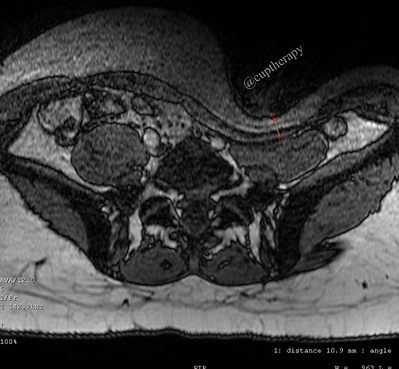
RESOURCES
Helping you bridge the gap between the latest in clinical research and practical application.
CURRENT
RESEARCH
We have partnered with the University of California, San Francisco Department of Radiology for research collaborations to produce innovative cutting-edge assessments using Myofascial Decompression techniques. This is the first 3T MR image ever taken of a decompressor on the body during intervention!
Read Now!


In our newest research project, we paired again with the Department of Radiology to explore the claims made by manual therapists that they can palpate and feel and "release" the psoas. This is the first 3T MR image ever taken of psoas major palpation in vivo during intervention! Check out the details.
Read Now!
2024 Study: The effect of different types of cupping therapy on acute changes in
ankle dorsiflexion
The aim of this study was to investigate the immediate effects of two different types of cupping protocols (comparing static to MFD) on ankle ROM, while including sham therapies to serve as active control groups and allow for blinding of participants to the therapy they received. See which protocol does best!
Read Now!


2020 Study: Acute Outcomes of myofascial decompression compared to self myofascial release on hamstring pathology after single treatment
The purpose of this investigation was to examine the acute effects on hamstring flexibility and patient-rated outcome mea- sures comparing two soft tissue treatments, 1) MFD, and 2) a moist heat pack with SMR using a foam roller in patients with diagnosed hamstring pathology. See which increases ROM and decreases pain most effectively.
Myofascial Decompression (MFD) evolved out of addressing sports and orthopedic injuries that did not respond to traditional joint mobilizations, HVLATs, other soft tissue interventions, or therapeutic exercise.
Simply addressing symptom-based articular, neural, or muscular complaints are only temporary fixes when the root cause of the problem may be connective tissue matrix dysfunction or fascial plane restriction. Without addressing soft tissue densification and the compensatory movement inefficiencies that they may cause, outcomes will be less effective.
We believe you can maximize your outcomes with these techniques by increasing efficiency of motion through fascial flexibility and neuromuscular re-education.
MYOFASCIAL DECOMPRESSION
BACKGROUND






BACKGROUND
ARTICLES & VIDEOS













